- Chestnut and Hemlock Newsletter
- Posts
- Anne D. Williams Interview
Anne D. Williams Interview
In this newsletter: an interview with Anne, a few notes about what puzzles I’ve been working on, a recipe for apple spice cake and an update on what plants have managed to survive another month.
Not in this newsletter: puzzles for sale. I’ll have some old puzzles and Pastimes ready in the next newsletter. (I have seen suggestions that a newsletter summary is helpful. Do you agree?)
Anne D. Williams
If you don’t know who Anne is, you aren’t paying attention to the history of wooden puzzles. She’s THE Energizer Bunny of puzzle research (and a former economics professor). She’s been very generous with her knowledge and insights and I am incredibly thankful. Italics and mistakes are mine.
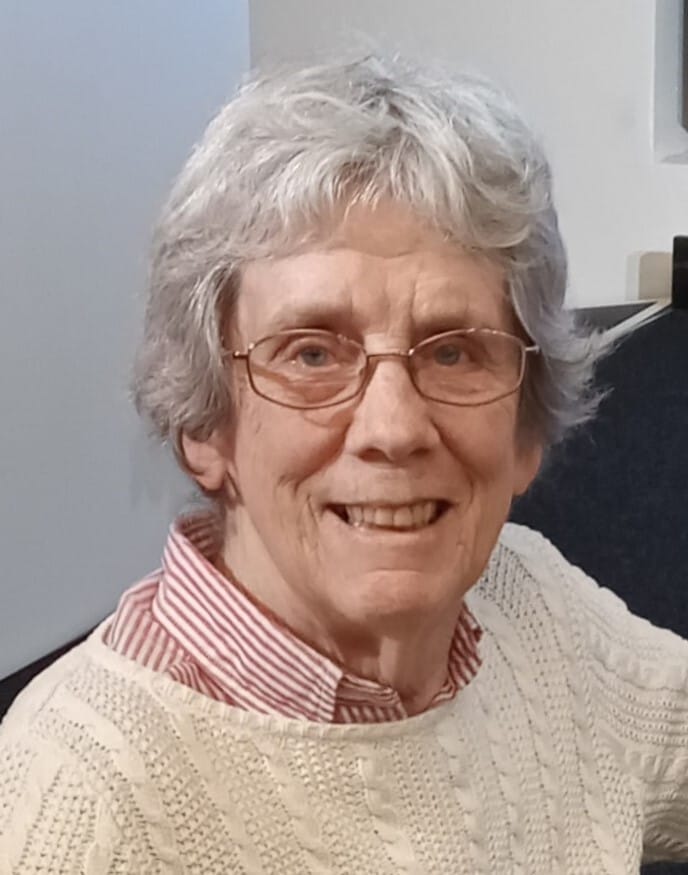 Anne D. Williams | How were you introduced to wooden puzzles? Jigsaw puzzles were a tradition in my family, and they were almost always wooden ones. One favorite was a large Chad Valley puzzle of the Cunard liner “RMS Aquitania” that my mother’s family had owned in the 1930s. Although it lacked one piece, I assembled it many times. |
Do you have a “Holy Grail” puzzle you still hope to find? I get most excited when finding a brand of puzzles I don’t already know about. As I assemble it, I gain insight into how that puzzle maker imagined, designed, and executed their puzzles.
What is the most unique or unusual puzzle you’ve ever owned? I treasure the very special puzzle Melinda Shebell created for me in 2007. She designed a huge collage of puzzle images, cut much of it herself, and recruited 18 other crafters to cut sections. “Some of Your Favorite Puzzles” weighs in at 2,600 pieces. It is a striking record of 250 years of puzzle history, and of the makers of hand-cut puzzles who were active in the early 2000s.

Melinda with “Some of Your Favorite Puzzles”
What first inspired you to research the history of puzzles, beyond collecting them? I began cutting wooden puzzles in 1977 as a way to supply my family with them. Then I discovered that old puzzles were inexpensive and easy to find in flea markets. Early in my collecting days I found books by Linda Hannas about British jigsaw puzzle history, but there was no comparable information for American puzzles. I initially thought there probably had been at most 50 U.S. manufacturers of puzzles, and it would be easy to find out about them. What a ridiculous idea! After more than 4 decades of research I’ve found more than 8,000 brands and written two books about them. Yet the story is still incomplete – new brands of puzzles from all turn up all the time.
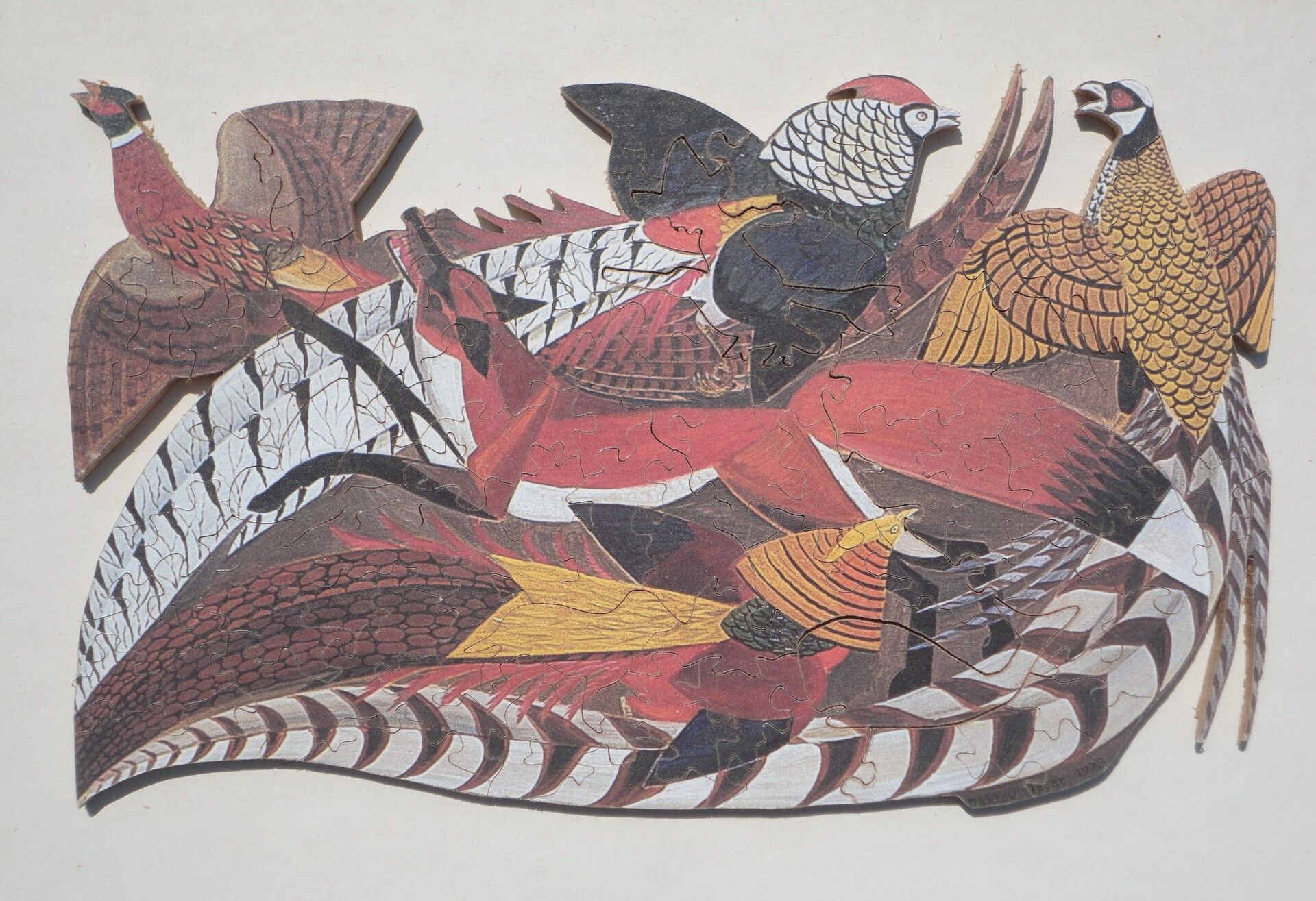 Anne cut “Fox and Pheasants” for the 2012 Pagey Elliott Puzzle Exchange |   |
What did your research process look like before so much was digitized? I traveled to dozens of libraries all over the U.S., from New York to California, to learn about the histories of individual companies. Today, with access to ancestry.com, newspapers.com, google, etc., much of that material is accessible via my laptop. And for materials that are not yet online it is easy to query local libraries and historical societies via email.
You’ve written extensively about Pastime Puzzles—what drew you to them? Parker Brothers was the most prolific maker of handcut wood puzzles for adults in the United States. Their Pastime department produced top of the line puzzles for fifty years. I’ve always enjoyed doing Pastimes because of their high quality and ample figure pieces, some of which were designed by the workers themselves. I also developed a personal connection with seven employees who worked in the Pastime department and who generously shared their experiences when I interviewed them in the 1990s. I was very impressed by their exquisite craftsmanship and creativity. [Listen to some of Anne’s interviews here.]
If you could travel back in time to a day in puzzle history, where would you go? I would choose a day in early 1933, the peak of the Great Depression puzzle craze, and would visit as many puzzle factories as I could squeeze into that day.
How has the puzzle world changed since you first began actively collecting? It has been wonderful to see the growth of puzzle events and groups. The first Puzzle Parley in 1994 had 23 attendees. The Rochester Parley last year attracted seven times as many puzzlers. The development of the Internet, social media, new groups such as Puzzle Jam Inc. and the growth of speed contests have brought many folks into puzzling. The availability of high quality puzzles has increased dramatically. The vibrant puzzle world of today is exciting and innovative, much more than it was 30 years ago.
How did your papers and part of your collection come to be at The Strong Museum of Play? I spent several years investigating the best place for my collection and research records. The Strong National Museum of Play in Rochester, NY stood out as a wonderful home for them. Chris Bensch and Nic Ricketts have been great stewards for the 7,500 of my puzzles that they acquired in 2014. They have posted photos of almost half of them in the online collections section of the Strong website. The Strong Archives & Library have digitized and posted online more than 250 recordings of oral histories I conducted and other puzzle related interviews. They hold my research on more than 1,100 puzzle manufacturers, along with almost 4,000 puzzle company catalogs and other reference works that I collected over five decades. The Strong’s commitment to making all this historical information available to puzzle lovers and researchers was a decisive factor in my decision to locate everything there. [Anne’s research papers at the Strong.]
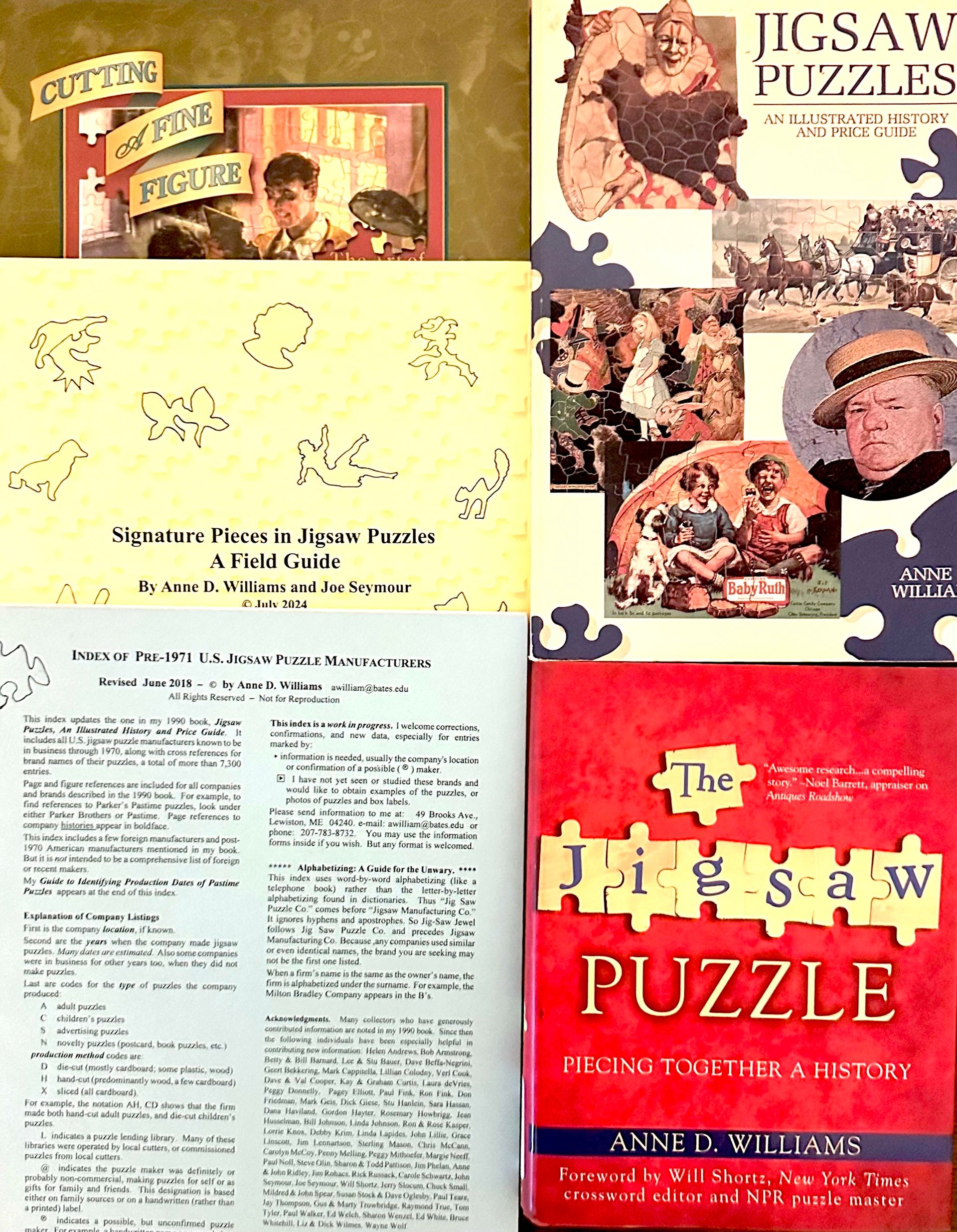 Some of Anne’s publications. She has also written numerous articles, in particular for AGPI Quarterly and The Strong Museum’s Journal of Play. | Looking back, what do you feel has been your greatest contribution to the puzzle community? My metapuzzle has been to assemble the pieces of jigsaw puzzle history in the United States. I am pleased and proud that I have been able to preserve stories of puzzle making and puzzle doing, stories that were in danger of being lost with the passage of time. I have had a huge amount of help – from puzzle creators themselves who shared their experiences, from collectors who generously let me search through their collections and alerted me to new finds, from museums that hosted exhibitions, from journalists who publicized this intriguing corner of Americana, and from friends who accompanied me on the hunt. |
What advice would you give someone who wants to organize their puzzle collection? At a minimum keep a numbered list (Excel is a handy tool) with columns to record for each puzzle: your ID number, manufacturer, brand, title, number of pieces, condition of puzzle, condition of box, acquisition info (date, source, price paid). Be sure to photograph the assembled puzzle, its label and any special features. [Anne used her detailed notes about each aspect of Pastime Puzzle boxes to figure out how to date puzzles without a written date. I put that information into a chart that you can use.]
From the scroll saw
I’ve been playing catch up since Puzzle Jam South and suspect that will be the name of the game for a while. We also are working on something new and exciting. Hopefully I can share that in the next newsletter.
I have now been doing subscription boxes for a full year. Thank you! I hope y’all have enjoyed the puzzles and the treats. All subscriptions for the fall (October- December) are sold out but winter (Jan-March) are available. The subscriptions for August were chosen in honor of Indian Independence Day. They were all watercolor paintings of India with instant chai and sweet biscuits as treats.
I’ll never forget seeing parakeets flying from the trees to land in the carved calligraphy on the mosque’s facade in 2000. 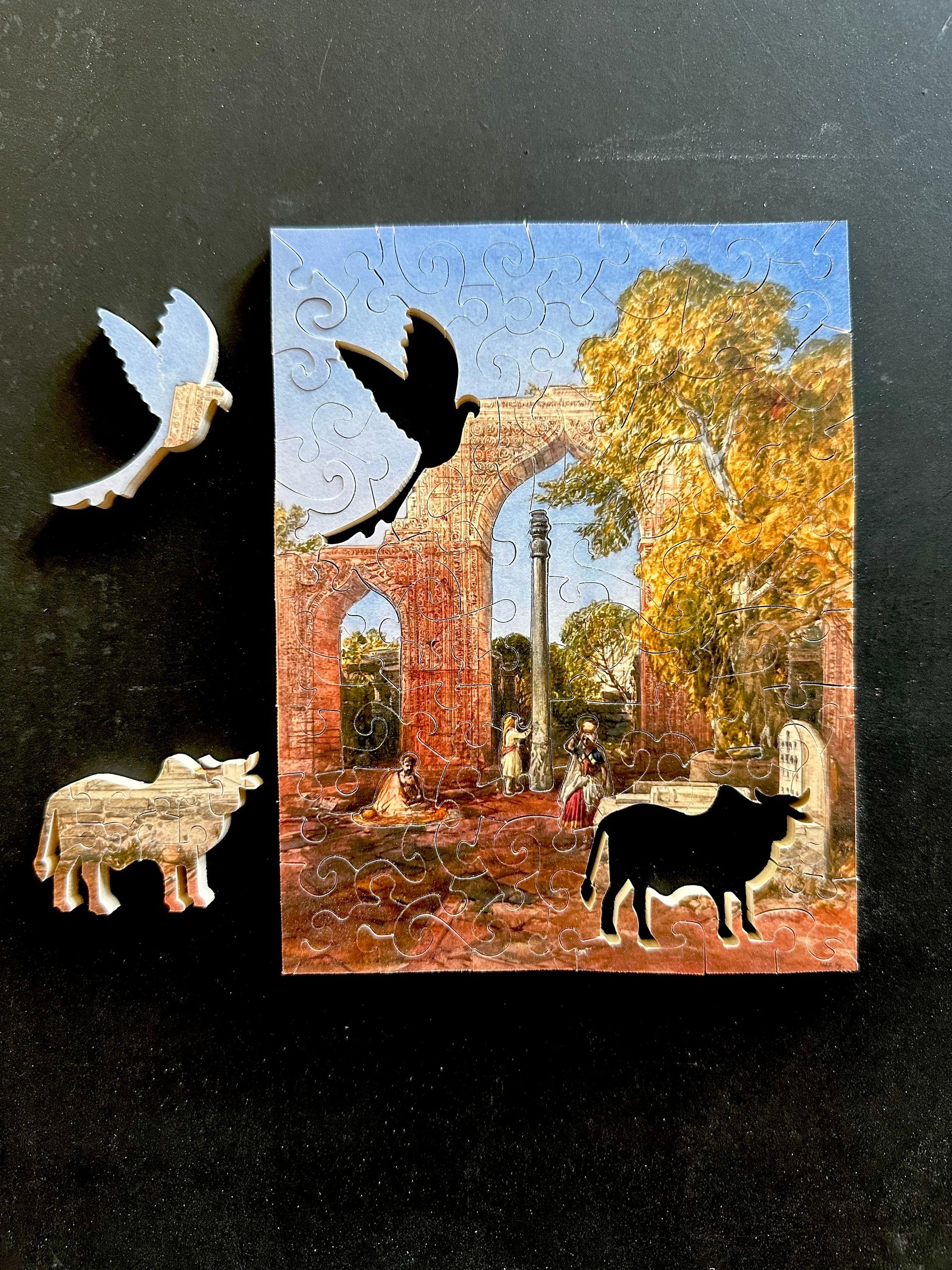 Iron Pillar in the courtyard of Quwwat-ul-Islam Mosque | We lived in Lucknow 2001-2002, so I had to include this painting, also by William Simpson, as one of the five subscriptions.  Mermaid Gate, Lucknow |
The September subscription puzzles were all apple shaped puzzles with dropouts taken from vintage illustrations. The treat was a pocket puzzle. The rest of the family went to NC to get apples while I was at Puzzle Jam South. We ate a lot of them, but we made even more into apple-pear sauce by combining them with the pears from our trees. It is SO GOOD! Of course I had to take some of it to make my favorite fall cake. You can download the recipe at the bottom if you want to try it. Note that I usually skip the frosting and bake it in 2 loaf pans.
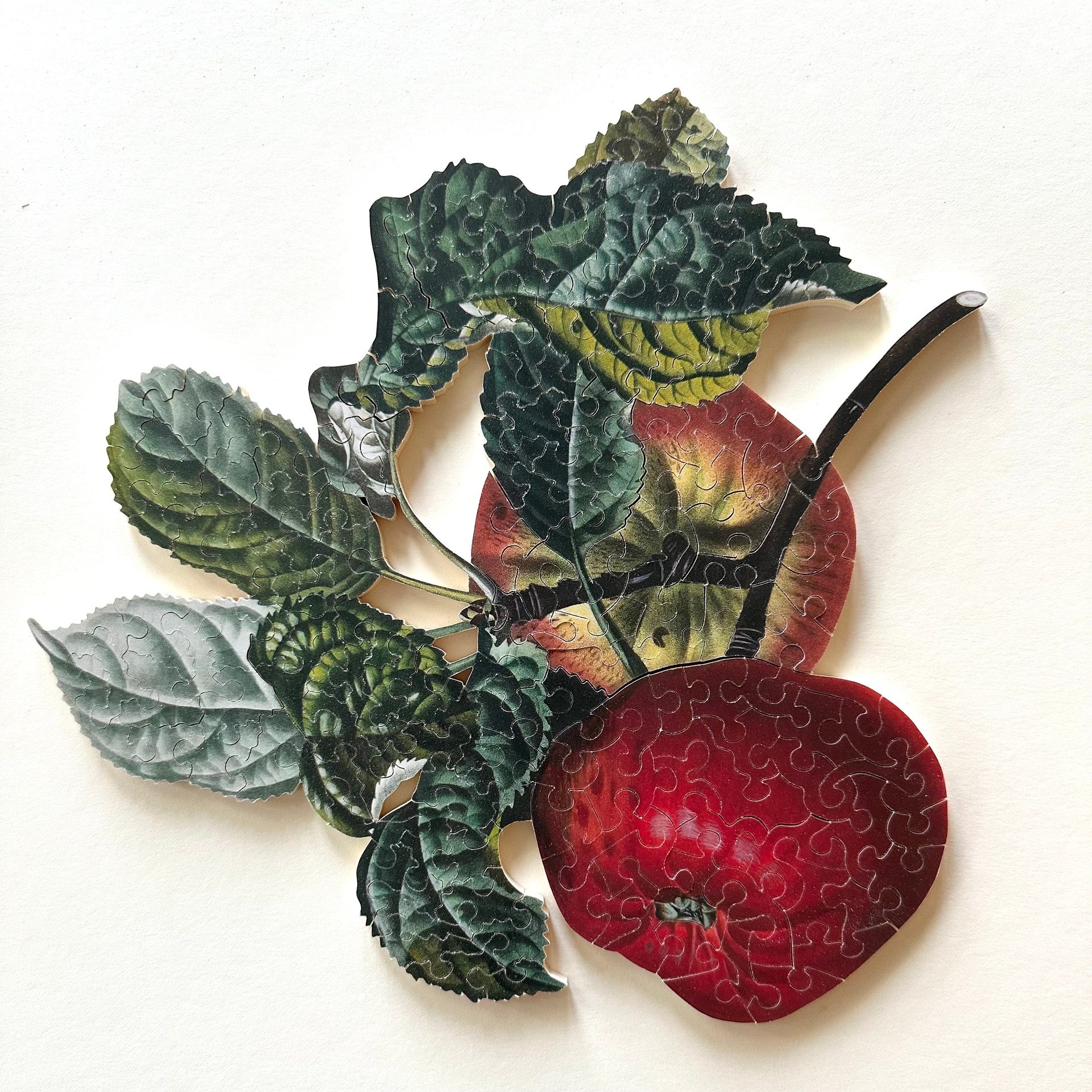
From the garden
Well, the root knot nematodes have found the tomatoes. Leaving the area mulched for 2 years starved them out, but it didn’t take them too long to find their way back. One of the varieties I planted, Celebrity, is supposed to be somewhat resistant to them and is still doing ok.
|
